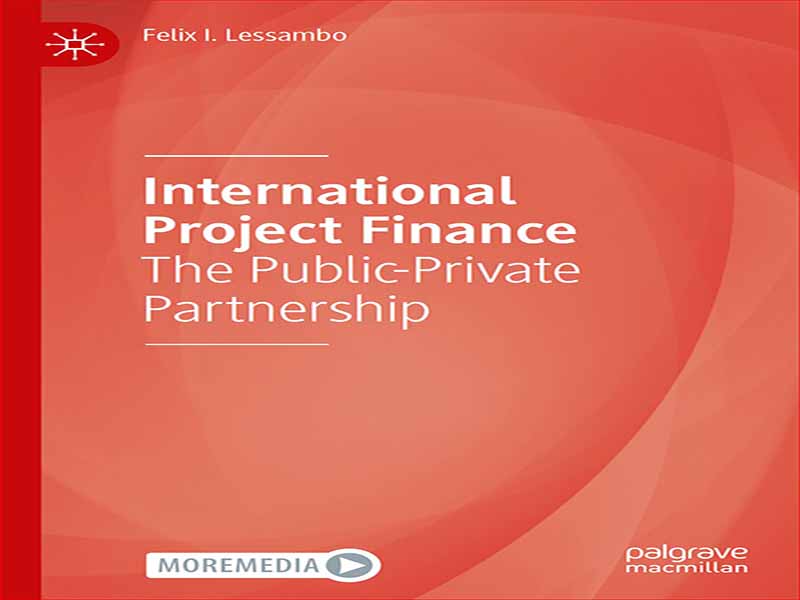- عنوان: International Project Finance
- نویسنده: Felix I. Lessambo
- حوزه: مدیریت پروژه
- سال انتشار: 2022
- تعداد صفحه: 318
- زبان اصلی: انگلیسی
- نوع فایل: pdf
- حجم فایل: 2.91 مگابایت
خاستگاه تامین مالی پروژه به قرن سیزدهم برمی گردد، زمانی که تامین مالی یک عملیات معدنی ساختاری شبیه به روش های امروزی نداشت. در سال 1299 پس از میلاد، تاج انگلستان اکتشاف و توسعه معادن نقره دوون را با بازپرداخت به بانک تجاری فلورانسی، فرسکوبالدی، با خروجی معادن تامین کرد.1 در قرن هفدهم، شکل دیگری از تامین مالی پروژه با صندوق سفرهای کشتی های بادبانی پدیدار شد. با سرمایه گذاران تامین مالی برای سفرهای تجاری به صورت سفر به سفر. پس از بازگشت، محموله و کشتیها منحل شدند و درآمد حاصل از سفر بین سرمایهگذاران تقسیم شد.2 طی قرنها، تأمین مالی پروژه عمدتاً به وسیلهای برای گردآوری کنسرسیومی از سرمایهگذاران، وام دهندگان و سایر شرکتکنندگان برای انجام پروژههای زیربنایی تبدیل شده است. برای سرمایه گذاران فردی بسیار بزرگ است که نتوانند آن را پذیره نویسی کنند. تا به امروز، تامین مالی پروژه، به عنوان جایگزینی برای تامین مالی مستقیم مرسوم، یک تکنیک به خوبی تثبیت شده برای پروژه های بزرگ سرمایه بر است. فینرتی تامین مالی پروژه را به عنوان جمع آوری منابع مالی برای تامین مالی پروژه های سرمایه گذاری سرمایه قابل تفکیک اقتصادی تعریف می کند، که در آن جریان نقدی پروژه به عنوان منبع وجوه برای خدمات رسانی به وام ها و ارائه بازده از سهام سرمایه گذاری شده در پروژه عمل می کند. تامین مالی زیرساختهای بلندمدت، صنعتی، استخراجی، زیستمحیطی و سایر پروژهها/خدمات عمومی (شامل PPPهای اجتماعی، ورزشی و سرگرمی) بر اساس ساختار مالی محدود که در آن بدهیهای پروژه و سرمایه مورد استفاده برای تامین مالی پروژه بازپرداخت میشوند. جریان نقدی تولید شده توسط پروژه (معمولاً، یک نهاد با هدف ویژه (SPE) یا وسیله نقلیه (SPV)). تأمین مالی پروژه با ساختاردهی تأمین مالی حول جریان نقد عملیاتی و دارایی های پروژه، بدون ضمانت های حامی اضافی، به تأمین مالی سرمایه گذاری جدید کمک می کند. تامین مالی پروژه شامل تامین مالی بدون رجوع برای توسعه و ساخت یک پروژه خاص است که در آن وام دهنده اساساً به درآمدهای مورد انتظار برای بازپرداخت وام خود از پروژه و به دارایی های پروژه به عنوان وثیقه برای وام خود نگاه می کند. به اعتبار عمومی حامی پروژه. بنابراین، این تکنیک میتواند ریسک سرمایهگذاری را کاهش دهد و منابع مالی را با هزینه نسبتاً کم به نفع حامیان مالی و سرمایهگذاران افزایش دهد. در طول قرن نوزدهم، پروژههای جاهطلبانهای مانند کانال سوئز و راهآهن ترانس سیبری ساخته، تامین مالی شد و متعلق به شرکتهای خصوصی بود. با این حال، کارآفرین بخش خصوصی پس از جنگ جهانی اول ناپدید شد و با از دست دادن کنترل قدرت های استعماری، دولت های جدید پروژه های زیربنایی را از طریق استقراض بخش دولتی تامین مالی کردند. دولت و سازمانهای خدمات عمومی مشتریان اصلی در راهاندازی کارهای عمومی شدند که پس از آن از مالیات عمومی پرداخت میشد. پس از جنگ جهانی دوم، بیشتر پروژههای زیربنایی در کشورهای صنعتی تحت نظارت دولت ساخته شد و از منابع بودجه مربوطه وامهای دولتی تامین شد. در سال 1978، ایالات متحده قانون تنظیم خدمات عمومی (PURPA) را تصویب کرد و یک بازار خصوصی برای نیروی برق ایجاد کرد. با انجام این کار، ایالات متحده راه را برای رشد تامین مالی پروژه در بسیاری از کشورهای صنعتی دیگر هموار کرد. به طور مشابه، خصوصی سازی های اخیر در مقیاس بزرگ در کشورهای در حال توسعه با هدف تقویت رشد اقتصادی و تحریک سرمایه گذاری بخش خصوصی، انگیزه بیشتری به ساختار مالی پروژه داده است. در دهه 1990 بهعنوان وسیلهای برای تامین مالی پروژههایی که برای کمک به برآوردن نیازهای زیرساختی فوقالعاده موجود در کشورهای توسعهیافته و در حال توسعه طراحی شدند، تامین مالی پروژه تقریباً جایگزین مدل سنتی تامین مالی شد که برای قرنها حاکم بود. شاید پربارترین استفاده از تامین مالی پروژه در بریتانیا بوده است، جایی که چیزی به نام “ابتکار تامین مالی خصوصی” (PFI) مورد استفاده قرار گرفته است. PFI در سال 1992 شروع به کار کرد و توسط دولت بریتانیا به عنوان یک برنامه مشارکت عمومی و خصوصی سیستماتیک مدیریت شده است.
The origins of project finance date back to the thirteenth century, when the financing of a mining operation was structured not unlike todays’ methods. In 1299 A.D., the English Crown financed the exploration and the development of the Devon silver mines by repaying the Florentine merchant bank, Frescobaldi, with output from the mines.1 In the seventeenth century, another form of project finance emerged with fund sailing ship voyages with Investors providing financing for trading expeditions on a voyage-by-voyage basis. Upon return, the cargo and ships were liquidated and the proceeds of the voyage split among investors.2 Over centuries, project financing has evolved into primarily a vehicle for assembling a consortium of investors, lenders, and other participants to undertake infrastructure projects that would be too large for individual investors to underwrite. To date, project financing, as an alternative to conventional direct financing, is a well-established technique for large capital-intensive projects. Finnerty defines project finance as the raising of funds to finance economically separable capital investment projects, where the project cash flow serves as the source of funds to service loans and provide returns on the equity invested in the project.3 The OECD defines project finance as the financing of long-term infrastructure, industrial, extractive, environmental, and other projects/public services (including social, sports, and entertainment PPPs) based upon a limited recourse financial structure where project debt and equity used to finance the project are paid back from the cash flow generated by the project (typically, a special purpose entity (SPE) or vehicle (SPV)).4 Project finance helps finance new investment by structuring the financing around the project’s own operating cash flow and assets, without additional sponsor guarantees. Project financing involves nonrecourse financing of the development and construction of a particular project in which the lender looks principally to the revenues expected to be generated by the project for the repayment of its loan and to the assets of the project as collateral for its loan rather than to the general credit of the project sponsor. Thus, the technique is able to alleviate investment risk and raise finance at a relatively low cost, to the benefit of sponsor and investor alike.5 Prior to World War I, private entrepreneurs built major infrastructure projects all over the world. During the nineteenth century, ambitious projects such as the Suez Canal and the Trans-Siberian Railway were constructed, financed, and owned by private companies. However, the private sector entrepreneur disappeared after World War I and as colonial powers lost control, new governments financed infrastructure projects through public sector borrowing. The state and the public utility organizations became the main clients in the commissioning of public works, which were then paid for out of general taxation. After World War II, most infrastructure projects in industrialized countries were built under the supervision of the state and were funded from the respective budgetary resources of sovereign borrowings. In 1978, the United States passed the Public Utility Regulatory Act (PURPA) and established a private market for electric power. In so doing, the United States paved the way for the growth of project financing in many other industrial countries. Similarly, recent large-scale privatizations in developing countries aimed at strengthening economic growth and stimulating private sector investment have given further impetus to project finance structuring. In the 1990s as a means of financing projects designed, to help meet the tremendous infrastructure needs existing in both developed and developing countries, project financing almost replaced the traditional financing model that prevailed for centuries. Perhaps the most prolific use of project financing has been in the UK, where something called the “Private Finance Initiative” (PFI) has been used. PFI was started in 1992 and has been managed by the British government as a systematic public-private partnership program.
این کتاب را میتوانید بصورت رایگان از لینک زیر دانلود نمایید.
Download: International Project Finance



































نظرات کاربران